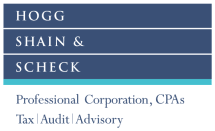Negotiate a Better Lease? Know the Accounting and Tax Implications of Lease Inducements
You’ve entered negotiations for a new lease and the landlord has offered you incentives or lease inducements to entice you to sign the agreement.
The lease is signed and includes a tenant allowance to assist the lessee with the construction or improvement of the premises.
You might wonder:
1. How should the lease inducement be treated for Canadian accounting (ASPE) and tax purposes?
2. Should the benefit be included in income in the period received or be allocated over the term of the lease?
Accounting treatment of lease inducements
Lease inducements are considered to be part of the lease agreement and therefore should be accounted for over the term of the lease.
The lease inducement can be treated two ways:
1. It can be allocated against the related capital asset addition, which in this case will be a leasehold improvement. Leasehold improvements are generally amortized over the term of the corresponding lease on a straight-line basis. This will work only if the amount of the addition is equal to or greater than the allowance received. You can’t have a negative addition. The annual amortization on the addition is reduced by the inducement and is shown on the income statement in ‘Amortization.’
2. It can be recorded separately on the financial statements under its own heading (For example “Lease inducements”). Each inducement received should be recorded and accounted for separately, as the lease term can vary. The lease inducement will be amortized over the term of the corresponding lease and shown on the income statement as “Amortization on lease inducements.” This will show the capital asset addition at its gross amount.
When deciding which option to choose, each company will need to determine what information they want to provide to their users and what information their users require.
Tax treatment of lease inducements
For tax purposes, lease inducements are fully taxable in the period they are received. Depending on the amount of the incentive, this could result in a large tax burden for companies who are already in tax payable position, or it may put them there.
Canada Revenue Agency (CRA) provides taxpayers with an alternative to fully taxing lease inducements in the year received. Taxpayers are allowed to apply the lease inducement received by reducing the capital cost of the specific class (Class 13 – leasehold improvements in this case). Again, the original capital cost must be greater than or equal to the lease inducement received.
Requirements to apply lease inducements to reduce capital costs:
To use this alternative an election must be filed to CRA. There is no prescribed form for this election so a letter must be prepared and include the following information:
– Subsection under which the election is made (subsection 13(7.4));
– The elected amount;
– Amount of inducement and date received;
– Date property acquired; and
– Original cost of the property (before reduction).
The election is due when the income tax return for the year is due.
The option to use for tax purposes will depend on the company’s tax planning strategies for the year involved.






